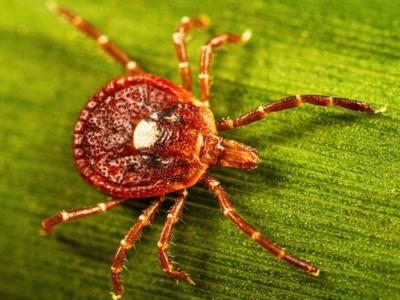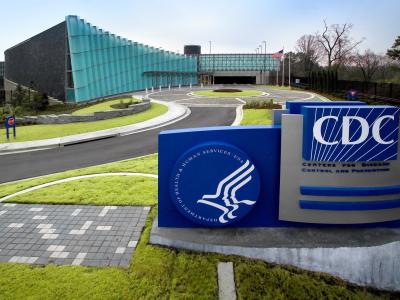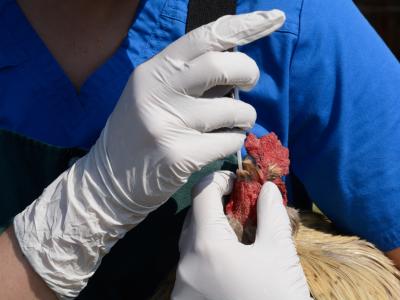- The Centers for Disease Control and Prevention (CDC) has closed its investigation into a Salmonella outbreak linked to eggs. The outbreak sickened 105 people in 14 states, with 19 hospitalizations and no deaths reported. Illness-onset dates ranged from January 7 to August 25. Of 42 people interviewed, 38 (90%) reported eating eggs before they became ill, and epidemiologic, laboratory, and trace-back data showed that eggs distributed by Country Eggs, LLC were contaminated with the outbreak strain of Salmonella Enteritidis and may have made people sick. On August 27, the company recalled the eggs, which had been distributed to grocery stores and food distributors in California and Nevada.
- Four new cases have been reported in the Marburg virus outbreak in southern Ethiopia, bringing the total in the outbreak to eight confirmed cases, according to a social media post from Ethiopia's Ministry of Health. Four deaths in the outbreak have been confirmed. In a separate update today, the World Health Organization confirmed six of the cases and three deaths, with 206 contacts identified and under active follow-up. The outbreak of the severe and often deadly viral hemorrhagic fever, which is typically transmitted to people from fruit bats and is in the same family as Ebola, is Ethiopia's first.
- The Japanese government said today that the average number of flu patients in designated hospitals has hit warning levels at the fastest pace in 10 years, according to Kyodo News. Data from Japan's Ministry of Health, Labour and Welfare show 145,526 flu patients were reported across roughly 3,000 hospitals nationwide from November 10 through November 16, with the average of 37.7 people per facility surpassing the warning level of 30. The outbreak has mainly hit children and students, with 5,777 elementary, junior high, and high schools closed or partially closed during the week.
Quick takes: Egg Salmonella outbreak called over, new Marburg cases in Ethiopia, intense flu in Japan
Study highlights colonization, spread of resistant bacteria in NICUs

A study of infants in a neonatal intensive care unit (NICU) found that more than half were colonized with at least one bacterial strain with antibiotic resistance or epidemic potential, and transmission was a frequent occurrence, researchers reported today in JAMA Network Open.
In the prospective study, researchers at the Medical Center-University of Freiburg in Germany used whole-genome sequencing (WGS) to analyze screened bacterial isolates from a cohort of infants who were admitted to a level three NICU from February 2019 to November 2020. The aim of the study was to evaluate the frequency of colonization with multidrug-resistant organisms (MDROs), which can increase the risk of severe and deadly infections in vulnerable infants, and identify bacterial transmission events.
"In healthy infants, the establishment of metabolic independence after birth is associated with acquisition of maternal microorganisms from the birth canal, skin, and breast milk," the study authors wrote. "However, in hospitalized and, in particular, in preterm infants, the microbiome receives major input from hospital-adapted microorganisms residing in other patients and on inanimate surfaces."
A third of colonizations linked to transmission
Of the 434 infants (median gestational age, 34.6 weeks; 55.8% male) who were included in the study, 225 (51.8%) were colonized with at least one MDRO. Of 418 unique colonizations, 142 (34.0%) were linked to transmission using WGS, with 37 unique transmission clusters identified, most frequently involving Escherichia coli. Of the 10 MDRO bloodstream infections detected in infants, four were linked to transmission events.
"Based on our high-resolution genomic surveillance, we hypothesize that bacterial transmission frequently occurs on NICUs," the authors wrote.
Multivariate analysis of risk factors associated with transmission found increased full-time nurse staffing and prior antibiotic use were associated with a 72% (odds ratio [OR], 0.28) and 59% (OR, 0.41) decreased transmission risk, respectively, while vascular catheter use was associated with a 65% (OR, 1.65) increased transmission risk.
The authors say the findings support prospective WGS of routine screening isolates as a tool to identify and resolve transmission events in ICUs.
2 deer infected on Texas farm linked to CWD-testing violations, deer smuggling

Two white-tailed deer at a Texas breeding facility linked to a recently uncovered deer-smuggling operation have tested positive for chronic wasting disease (CWD), an illness wildlife laws aim to prevent, the Texas Parks and Wildlife Department (TPWD) reported yesterday.
The detections were the first for Tom Green County, in west-central Texas. The farm is owned by Ken Schlaudt, 64, of San Antonio.
"The facility is one of several linked to the recent 'Ghost Deer' investigation, in which Texas Game Wardens uncovered widespread, coordinated deer-breeding violations," TPWD said.
Some of the infractions were smuggling captive and free-range deer between farms and ranches; CWD testing and license violations; and misdemeanor and felony drug charges related to controlled sedatives. CWD is a fatal neurologic disease that infects cervids such as deer and elk.
"These intentional acts jeopardize the health and wellbeing of every deer in the state by circumventing the laws in place to prevent the spread of CWD," Col. Ronald VanderRoest, TPWD law enforcement director, said in the news release.
Owing to shoddy recordkeeping, additional CWD exposures unknown
The department noted that proper transfer permit procedures include CWD testing before transferring deer between facilities. The law also requires the submission of identification, movement, and testing records to Texas Wildlife Information Management Services.
Due to negligent recordkeeping and intentional testing violations associated with Schlaudt's facility, it is unknown exactly how many CWD-exposed deer have been moved or what other ranches and facilities across the state may be affected.
"Due to several violations linked to this facility during the investigation, including felony tampering with governmental records and violation of disease monitoring protocols that increased the risk of spreading CWD to other parts of the state, all deer at Schlaudt's facility were removed and submitted for disease testing," TPWD said.
"Due to negligent recordkeeping and intentional testing violations associated with Schlaudt's facility, it is unknown exactly how many CWD-exposed deer have been moved or what other ranches and facilities across the state may be affected," it added.
The investigation began in 2024 after wardens discovered violations during a Montgomery County traffic stop, eventually revealing one of the largest deer-smuggling networks in state history and the filing of about 1,400 charges against 24 people in 11 counties.
2 more Wyoming deer hunt areas confirmed as CWD-positive

The Wyoming Game and Fish Department (WGFD) yesterday announced first-time chronic wasting disease (CWD) detections in two more deer hunt areas: 106 and 150.
In Deer Hunt Area 106, in the Cody Region, a hunter harvested a mule deer buck that was part of the Clark’s Fork mule deer herd, in which CWD was first detected in 2019. Cody is located in the northwestern part of Wyoming and serves as the eastern gateway to Yellowstone National Park.
The hunt area abuts four other CWD-positive deer hunt areas: 105 (detected in 2019), 110 (2016), 111 (2016), and Yellowstone National Park (2023).
Hunters asked to submit samples for testing
The case in Deer Hunt Area 150, in the Jackson region, was in a white-tailed buck that was part of the Sublette mule deer herd. Located in the northwestern corner of Wyoming, Jackson serves as a gateway to both Grand Teton and Yellowstone National parks.
Hunters can assist in data collection by submitting samples for free CWD testing, especially when hunting in priority or mandatory CWD testing areas.
This area borders two other CWD-positive deer hunt areas: 152 (detected in 2019) and 155 (2022). The Sublette mule deer herd first tested positive in 2017.
"Continued monitoring of CWD is important to help Game and Fish understand the potential impacts of the disease and to evaluate future management actions," the news release said. "Hunters can assist in data collection by submitting samples for free CWD testing, especially when hunting in priority or mandatory CWD testing areas."
A fatal neurodegenerative disease of cervids such as deer, elk, and moose, CWD is caused by infectious misfolded proteins called prions that spread from animal to animal and through the environment. While it isn't known to infect people, health authorities recommend against consuming the meat of a sick or infected animal and urge caution when handling their carcasses. (See today's CIDRAP News in-depth story.)










